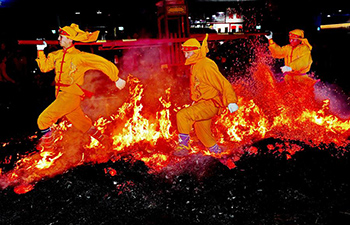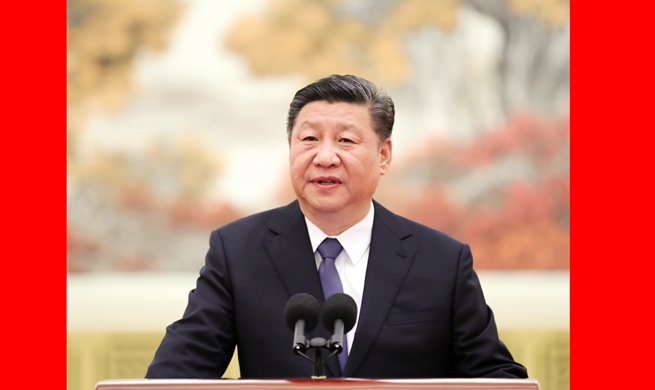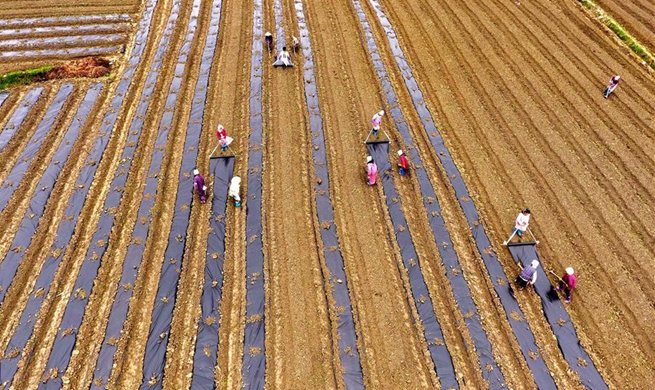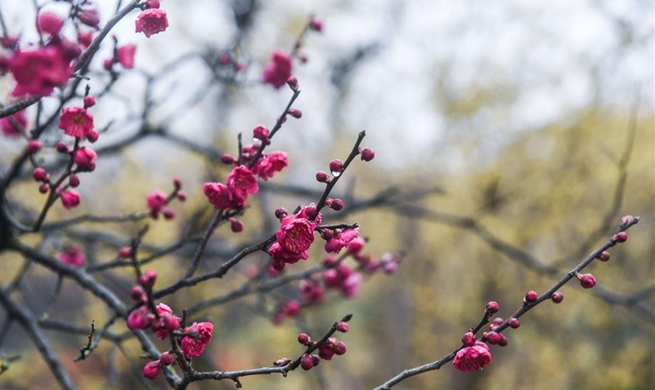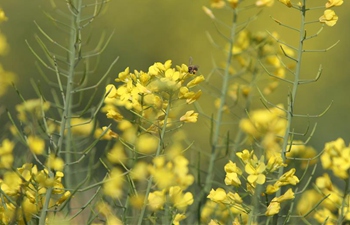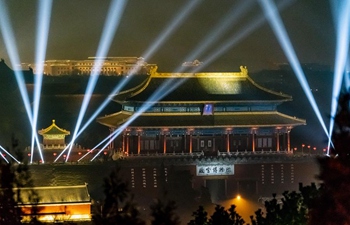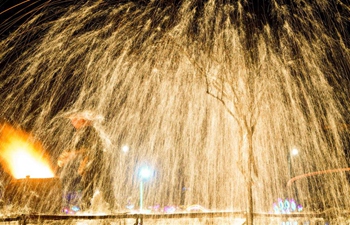KUNMING, Feb. 21 (Xinhua) -- The ancient temples, old alleys and caravansaries of the ancient town of Shaxi are not just reminders of past glories, but also attract tourists from around the world.
A remote township in Jianchuan county, southwest China's Yunnan province, Shaxi was once an important trading hub for tea, herbs, silks and salt on the ancient Tea Horse Road that linked Yunnan to Tibet.
Amazed by the serenity and elegance of the town, French tourist Miller said: "The idyllic scenery makes me feel relaxed, and the ethnic minorities cultures are full of vitality."
Dong Zengxu, director of the institute of cultural heritage of Jianchuan, said that in ancient times, commercial exchanges not only brought Shaxi economic prosperity but also made it a place of blended cultures and religions.
"In the old days, it was an adventurous business to travel along the Tea and Horse Road because trade caravans had to face harsh conditions on snowy mountains and go through steep ravines and fast-moving waters," Dong said. "When they made it to Shaxi, they felt the place was just like a paradise, then a marketplace was formed here."
However, the late 19th century saw the decline of the once-busy trading hub because it was far away from emerging modern arterial roads, and other means of transport replaced the traveling caravans.
In 2002, a restoration project was initiated to preserve the cultural heritage and landscape, improve infrastructure and promote economic growth in Shaxi.
But the preservation work was challenging. "The ramshackle theater and guest houses were overgrown with grass and weeds," Dong said.
Restoration workers carefully marked all parts of the ancient buildings. They took down some parts and fixed them back to their initial places after cleaning and repairing.
"We did our best to restore the traditional architecture. For example, the bumpy cobblestones built during the Qing Dynasty (1644-1911) were reserved after bitter disputes among experts," said Huang Yinwu, a leader of the project.
Years of efforts are paying off. The project saw old buildings renovated and sceneries beautified, thus turned Shaxi into a desirable destination for tourists at home and abroad.
Guy Lapointe, a tourist from Quebec in Canada, paid a three-day visit with his family earlier this year before Chinese Lunar New Year.
"We enjoyed sightseeing old buildings, walking on the ancient Tea and Horse Road and hiking in nearby countryside," Lapointe said.
Booming tourism has benefited local residents. During the Spring Festival holiday, over 114,000 tourists visited Shaxi and tourism revenues rose 11 percent year-on-year to 134 million yuan (19.8 million U. S. dollars), according to data from the tourism resources protection, construction and management committee of Jianchuan.
"There are over 100 hotels and inns in Shaxi and many of them are run by locals," said Zhang Zhuolin, an official with the committee. "Tourism has also boosted sales of local products such as honey and wild mushrooms."
Zhao Jiahua, 33, once worked as a site keeper at the beginning of the restoration project over 10 years ago.
He then found a job in a hotel. At the end of 2017, Zhao opened his own inn with 18 guest rooms.
"Our rooms were fully reserved during the Spring Festival holiday. Tourists like our traditional Bai ethnic dishes," Zhao said. "Poverty once forced young adults to leave home and make a living elsewhere. But many of them have returned in recent years because they can find more opportunities here."






